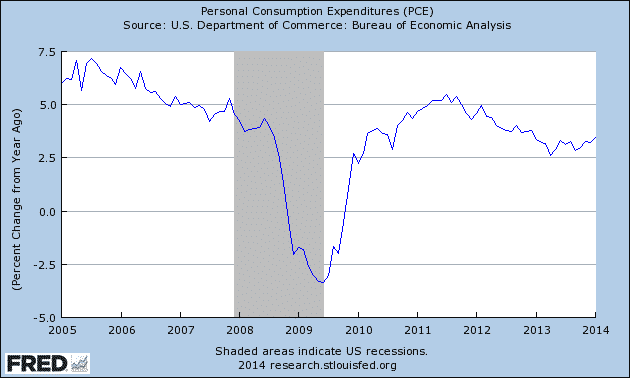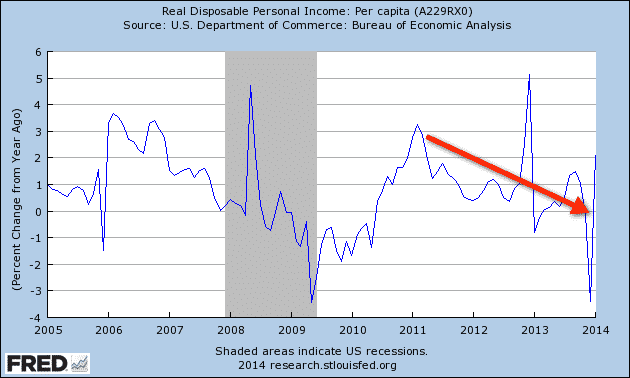Back in the US, what are the data telling us?
Today’s ADP employment report came out with a figure of 139,000 jobs added to the US economy in February. This number is low and comes with downward revisions to past numbers. The ADP data are the last big numbers we will see except weekly initial claims before the jobs report come out. I think the numbers point to a tepid pace of underlying growth in the 2% range, not yet susceptible to recession due to exogenous shocks, but weaker than generally perceived.
ADP job gains for January were revised down to 127,000 from 175,000 and for December, the revision was down to 191,000 from 227,000. That is not a positive sign on the jobs front. My general view here is that recessions are led by negative income and job shocks. What happens is that we get to a point in the business cycle where the drop in personal income is so large that households begin to rein in personal consumption at a time when inventories are building. This catches businesses by surprise and the inventory build reverses and becomes an inventory drawdown. If the interaction of these forces is large enough, then it induces layoffs that lower personal income enough to further lower personal consumption and to then drive down production, inventories, and capital investment. So income and jobs are core to this economic model.
An example comes via the statistics from the last recession. Personal consumption expenditures are a less noisy data series than personal income because people like to smooth their consumption patterns to maintain their lifestyle. But in the chart below we can see the rate of increase of personal consumption drifting lower from 2005 until the recession hit at the end of 2007, at which point consumption growth falls off a cliff and consumption then turns down. With recovery, growth resumes at a lower pace.

Notice that the pace of consumption growth started to turn down again in 2011, hence the reason for more QE. Since 2013 consumption growth has flatlined and we may be poised for an upturn.
Now, contrast this with the personal income chart below.

The interesting bit here is that the real deterioration in personal income began in 2006, after personal consumption growth had already started to decline. If you recall the talk about the housing ATM, people were maintaining excess consumption growth by using their houses to extract equity for consumption. And the figures here show rates of personal income growth below the consumption growth.
House price appreciation began to stall in 2005 and that’s when consumption growth initially turned down. But beginning in 2006, personal income growth turned down too, all the way until we hit recession in late 2007. In this cycle, the data are noisy. But overall the personal income growth trend is down from 2011, just like the personal consumption trend. If the trendline I drew in is right, then it suggests that we are closer to recession than we would like. There is a big spike up in personal income growth though and this dovetails with an incipient cosnumption growth uptick as well. So, let’s watch the data.
The data I am watching most closely come from the weekly jobless claims numbers. If the job and income trends lead consumption trends then we should expect an increase in jobless claims on a year-over-year basis to be a sign of economic weakness. And I believe we are heading in that direction. By May, I believe the data will be unfavorable for the claims series. At that point, only wage gains and excess consumption due to asset price appreciation will keep consumers going forward. This could be bolstered by capital investment but inventories and government spending will be working against growth. If housing and stocks stall, this will be another headwind that will definitely push the US economy into stall speed.
So, right now, it’s steady as she goes for 2% growth. But the risk is that we start to drift down toward 1% trend growth and that makes the US vulnerable to recession.
Comments are closed.